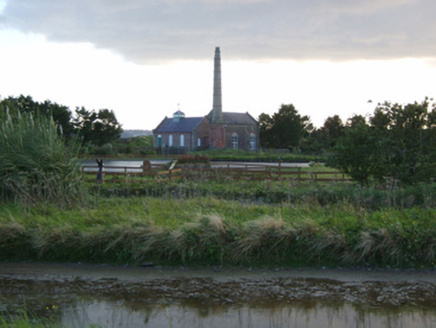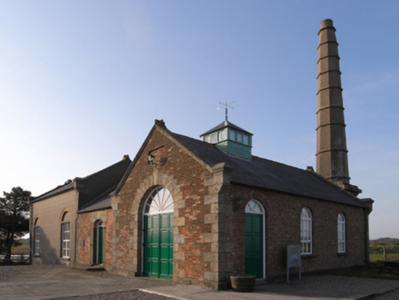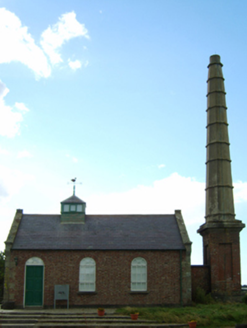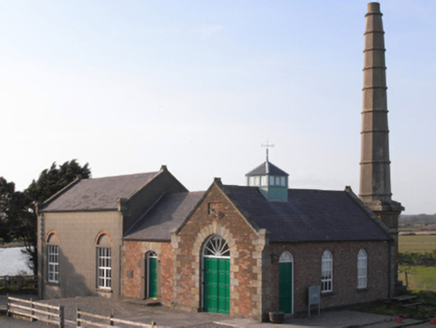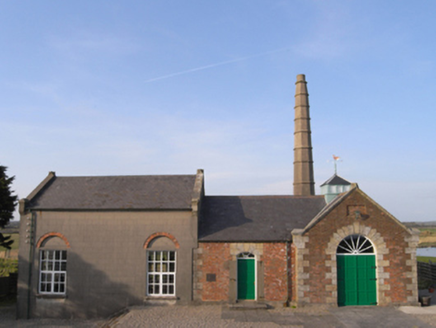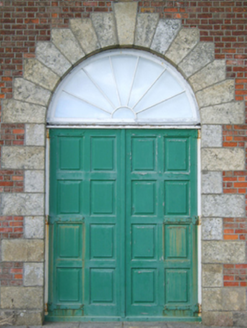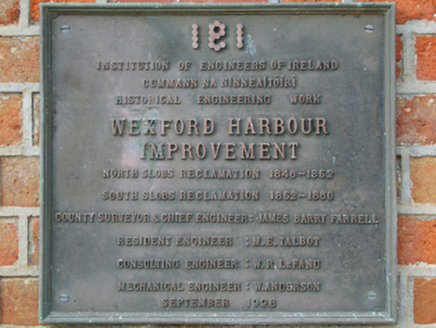Survey Data
Reg No
15703805
Rating
Regional
Categories of Special Interest
Architectural, Technical
Original Use
Engine house
In Use As
Engine house
Date
1845 - 1852
Coordinates
307576, 123884
Date Recorded
17/09/2007
Date Updated
--/--/--
Description
Detached three-bay single-storey pumping station engine house, extant 1852, on a T-shaped plan with single-bay (single-bay deep) single-storey off-central return (west). "Improved", 1910-1, producing present composition. Upgraded, 1967-9. "Restored", 1991. Pitched slate roof on a T-shaped plan with roll moulded terracotta ridge tiles, lichen-spotted cut-granite coping to gables on cut-granite corbel kneelers with roll moulded cruciform finials to apexes, and cast-iron rainwater goods retaining cast-iron downpipes. Repointed red brick Flemish bond walls on cut-granite plinth with cut-granite flush quoins to corners. Segmental-headed door opening (south) with cut-granite step threshold, and repointed red brick voussoirs framing timber panelled door having fanlight. Segmental-headed window openings (north) with cut-granite sills, and repointed red brick voussoirs framing timber casement windows having fanlights. Set on slobland.
Appraisal
A pumping station engine house representing an important component of the mid nineteenth-century civil engineering heritage of County Wexford with the architectural value of the composition, one erected in tandem with land reclamation works completed (1846-52) under the supervision of James Barry Farrell (1810-93), County Surveyor for County Wexford (appointed 1840; retired 1891; cf. 15704302), suggested by such attributes as the compact plan form; the construction in a vibrant red brick offset by silver-grey granite dressings not only demonstrating good quality workmanship, but also producing a pleasing two-tone palette; the elegant "arcaded" profile of the openings underpinning a restrained pseudo-Italianate theme; and the high pitched roofline: meanwhile, aspects of the composition clearly illustrate the continued development or "improvement" of the pumping station engine house in the early twentieth century with those works attributed to Rudolph Maximilian Butler (1872-1943) of Dawson Street, Dublin (Irish Builder 1910, 764).
